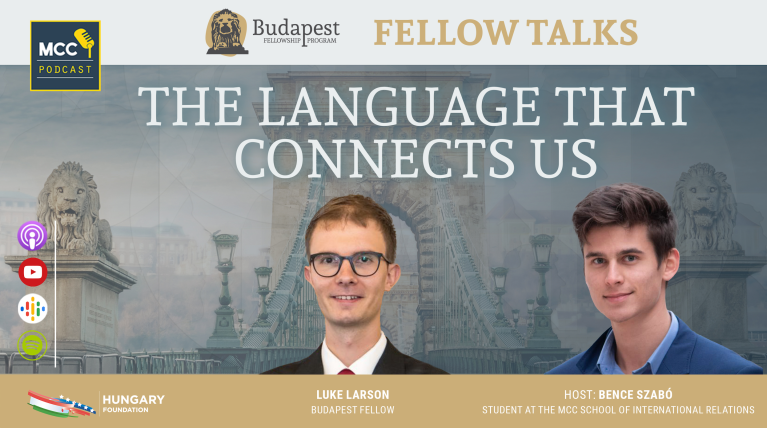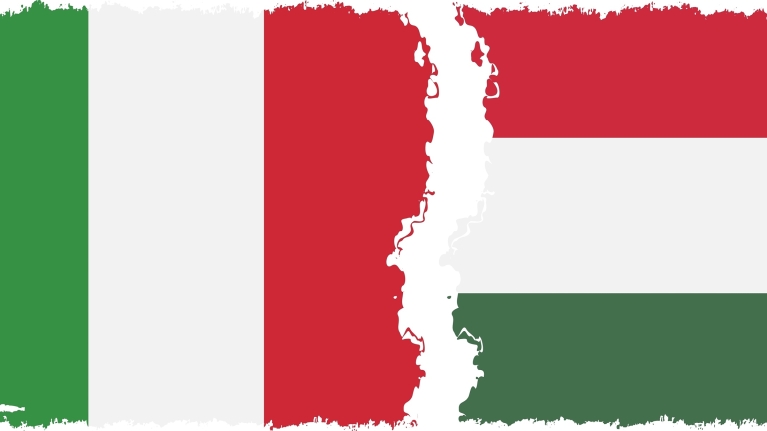Space research, even though it is only a half-century old, became an essential field of development, affecting almost every area, including both military and civil aspects. Being an influential sector, the size of the space economy is constantly growing, as it is now worth 464 billion dollars, and is projected to be enlarged to over 1 trillion dollars in 2040.
In this sharpening competition, Europe wants to become an influential actor, already contributing to space research on a global scale. To achieve this ambition, European nations need effective cooperation to unite their capacities for a common goal. The institutionalisation of this collaboration manifests primarily in the form of the European Union and the European Space Agency, which provides an essential base for realising influential projects. Beyond this multilateral form, the cooperation builds up from strong bilateral cooperations. These collaborations have mutually beneficial effects for the partners, as the cooperation in the space sector creates an example for common work in other fields, thus launching spillover effects, strengthening the overall bilateral relations.
In accordance with these reasons have been signed the Memorandum of Understanding between Italy and Hungary in Rome, in December 2022, which is a milestone in the history of this bilateral cooperation. This brief summary introduces the main aspects of this cooperation and shows the perspective of the potential common future.
Italy was the third country in the world and the first in Europe to launch satellites into space, as San Marco satellite was launched only 7 years after the Sputnik, thus marking the beginning of a new era for Italian and European space research. Following the San Marco project, the SIRIO programme created a framework for satellite telecommunication, outrunning similar European projects, such as the OTS. Since then, Italy has been contributing to uncountable space missions providing technological and scientific knowledge for their success. Beyond that, Italy has so far delegated 7 astronauts in numerous international missions, thus becoming a major spacefaring nation. In accordance with these developments, Italy has achieved many records as well, in which astronauts played significant part, as Luca Parmitano has passed the most time in Extravehicular Activity (EVA) from European astronauts, and Samantha Cristoforetti (whose name is related to many records) was the first European female astronaut to be the commander of the International Space Station.
This nation’s significant contribution to space research was not only manifested in scientific and technological achievements but at the same time Italy has been always managing a proactive space diplomacy, playing an enormous part in the construction of European space cooperation. One of the first examples of this was the creation of the European Launcher Development Organisation (ELDO) and European Space Research Organisation (ESRO) which was initiated particularly by the Italian physicist, Edoardo Amaldi. Later, these two organisations were merged to create a common platform for the space research initiatives of the continent, which became the European Space Agency (ESA) in 1975. Beyond being a founding member, Italy became a central pillar of this cooperation which is proved also by the financial dimensions, as Italy is the third largest contributor to the ESA budget in 2022. Italy also hosts the Centre for Earth Observation of ESA (ESRIN) coordinating Earth-observing missions and providing necessary technological background for them.
Overall, Italy has always been a major partner in many international space research projects, adding financial, technological or scientific contributions to the global progress of space research. Being at the same time a proactive member of European space cooperation, this attitude provides a promising future for the bilateral cooperation with Hungary as well.
Hungary contributes to space research since the beginnings, as in contrast to its capabilities and size, this nation has accomplished globally determining scientific achievements. A symbolic sign of the importance of these discoveries is the fact that the boundary of space (located around the height of 100 kilometres) was named Karman-line after the Hungarian astrophysicist (contributing significantly to rocket science) Tódor Kármán. The first milestone of the Hungarian space research was the Moon radar experiment of Zoltán Bay in 1946, when he measured for the first time in Europe the distance between Earth and Moon creating the basis for radio-astronomy, despite the adverse environment of the war. Even though the nearly half-century Soviet occupation of Hungary limited the perspective of space research conditions, Hungarian researchers continued creating innovations.
One of the most remarkable examples of this is the Pille space radiation dosimeter, which measures the amount of cosmic radiation, being an essential device in the process of protecting space crew and equipment during missions. It was developed during the 1970s and was used both on Soviet and US spacecrafts and proving the ongoing central role of Hungary in space dosimetry, the Artemis-1 mission used Hungarian dosimetry equipment as well. Beyond the technological innovations, Hungary also has a significant role in scientific achievements, a latest example is in astronomy, as a Hungarian observatory was ranked in 2022 as the leading non-NASA funded actor in asteroid-observing. Hungary delegated its first astronaut in 1980, and the selection of the next one is in progress for a mission planned to be around 2025. Hungary has launched and played part in the development of numerous satellites so far, specialising in the miniaturisation of this technology.
Beyond being a member of the space cooperation framework in the European Union, by joining the ESA in 2015, the country’s participation in international missions was widened, contributing to many projects, and developing both multi and bilateral cooperation, thus accumulating appropriate experience to become an adequate partner of Italy for joint space research.
As a positive consequence of the previously mentioned potentials of these countries, the initial process of this bilateral cooperation has already brought success alongside common interests. It was clearly demonstrated that Hungary and Italy can reach milestones in space research together through common initiatives, when in 2012, the maiden flight of the Vega space launch vehicle (which was built in Italy) accomplished successfully which was a historical event for Hungary as well, because it was the launch of its first satellite, the Masat-1. A recent common project having a similarly promising perspective is the Mauve satellite, which project is the fruit of a European cooperation, in which Hungarian and Italian scientists and engineers are playing a central part. Meanwhile, the main basis of the bilateral collaboration is constructed by governmental efforts, as one of the first steps of the process was the space cooperation agreement signed in 2021 between the Hungarian Government and the partly Italian-owned aerospace company, Thales Alenia Space. A sign of the potential of this perspective is the previous success made in the defence sector, providing help to the Hungarian Defense Force in the process of digitalisation.
Now, cumulating these governmental endeavours, the partnership between these two nations is widened with the Memorandum of Understanding, opening space for direct collaboration with the public and private actors of the space sector. This upcoming possibility of regional partnership based on common interests can be beneficial mutually not only on a bilateral but on a European scale, developing the ongoing cooperation to another level. In accordance with these ambitions, this initial stage of the relationship should be strengthened by connecting the actors of the public and private sectors, creating links built on dialogue.
With the aim of helping this process has bornt the idea of organising the First Space Cooperation Conference between Hungary and Italy, which is planned to be realised in Rome 2023 with the help of Università degli Studi Link and Mathias Corvinus Collegium.









